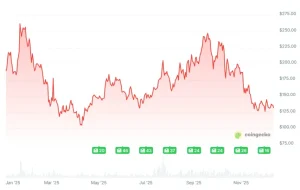Bitcoin’s Next Buy Signal May Be Triggered by Bond Market Stress, Says Analyst

A growing number of market strategists believe that Bitcoin could find its next major upward catalyst from strains in the global bond market. With rising yields, heightened sovereign debt risks, and volatility in government securities, some analysts argue that investors may increasingly view Bitcoin as a hedge against systemic stress. This perspective highlights the cryptocurrency’s shifting role—from a speculative asset to a potential store of value when traditional markets falter. If turbulence in fixed-income markets escalates, digital assets like Bitcoin may stand to benefit from a renewed wave of capital inflows.
Bond Market Volatility and Its Ripple Effects
Bond markets, historically considered the bedrock of global finance, are showing signs of vulnerability. Rising government borrowing costs, inflationary pressures, and fiscal imbalances have led to significant stress across sovereign debt markets. For institutional investors, these developments signal tightening liquidity conditions and diminishing appeal for long-duration bonds.
Such stress often prompts capital reallocation toward alternative assets that can act as inflation hedges or offer asymmetric return opportunities. In this context, Bitcoin is increasingly discussed as a viable option, especially for investors wary of prolonged volatility in fixed-income instruments.
Bitcoin as a Hedge Against Systemic Risks
Bitcoin’s narrative has steadily evolved from being a purely speculative instrument to a potential safeguard against macroeconomic uncertainty. Its decentralized structure, capped supply, and independence from government monetary policy present it as a contrasting alternative to debt-laden fiat systems.
While critics highlight Bitcoin’s price volatility, proponents argue that bond market instability could recalibrate risk perceptions. If traditional “safe-haven” assets like U.S. Treasuries lose credibility due to persistent fiscal strain, Bitcoin may attract a greater share of institutional and retail inflows seeking stability outside the fiat framework.
Analyst Perspectives
According to market strategists, the interplay between bond yields and Bitcoin pricing dynamics deserves close scrutiny. Historically, sharp surges in yields have pressured risk assets. However, prolonged stress in government securities could prompt investors to diversify, positioning Bitcoin as a countercyclical hedge.
Analysts also emphasize the importance of liquidity conditions. If central banks step in with interventions to stabilize bond markets, excess liquidity could indirectly fuel demand for digital assets. Conversely, sustained tightening could limit speculative appetite, though Bitcoin’s long-term investment case remains intact.
Implications for Investors
For investors navigating uncertain conditions, the potential alignment of Bitcoin with bond market stress serves as both an opportunity and a caution. While the digital asset may benefit from renewed capital flows, timing and volatility remain critical considerations.
A prudent approach would involve balancing exposure between traditional assets and alternative hedges like Bitcoin, especially in anticipation of further turbulence in global debt markets. As macroeconomic headwinds intensify, the cryptocurrency’s role as a financial hedge is likely to face one of its most significant tests.
Looking Ahead
If bond market instability deepens, Bitcoin could witness a pivotal shift in its adoption narrative. Beyond short-term speculation, it may increasingly be regarded as a structural hedge against systemic risks in traditional finance. For investors, the coming months will likely reveal whether digital assets can truly fulfill this role or remain tethered to broader risk-asset cycles.






